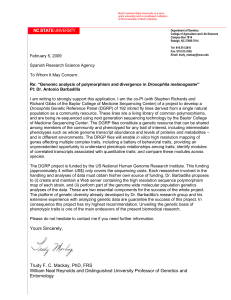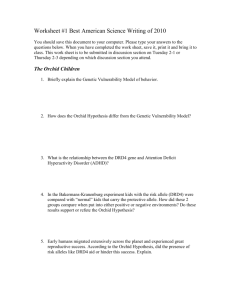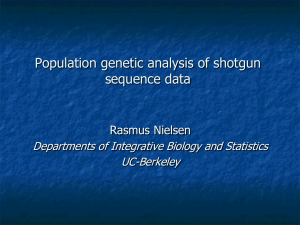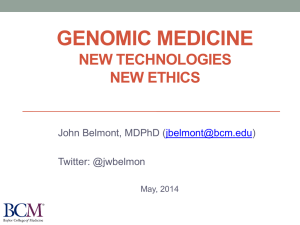Guide: Genome Sequencing and Dimensions of Race and Identity
advertisement
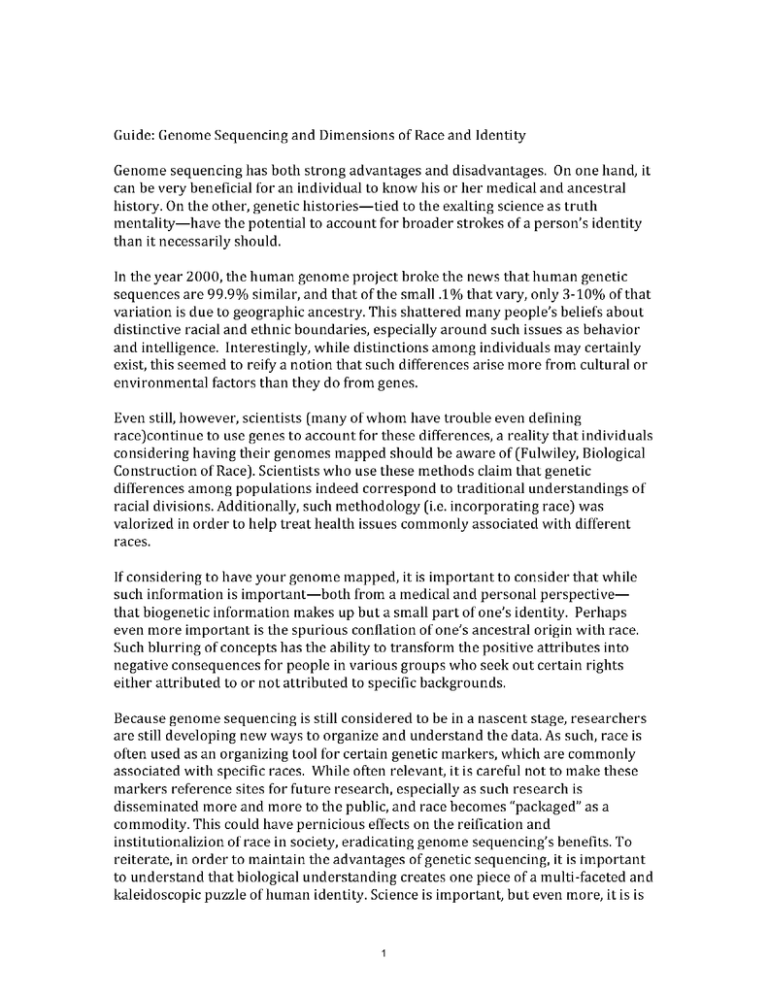
Guide: Genome Sequencing and Dimensions of Race and Identity Genome sequencing has both strong advantages and disadvantages. On one hand, it can be very beneficial for an individual to know his or her medical and ancestral history. On the other, genetic histories-tied to the exalting science a s truth mentality-have the potential to account for broader strokes of a person's identity than it necessarily should. In the year 2000, the human genome project broke the news that human genetic sequences are 99.9% similar, and that of the small .1% that vary, only 3-10% of that variation is due to geographic ancestry. This shattered many people's beliefs about distinctive racial and ethnic boundaries, especially around such issues as behavior and intelligence. Interestingly, while distinctions among individuals may certainly exist, this seemed to reify a notion that such differences arise more from cultural or environmental factors than they do from genes. Even still, however, scientists (many of whom have trouble even defining race)continue to use genes to account for these differences, a reality that individuals considering having their genomes mapped should be aware of (Fulwiley, Biological Construction of Race). Scientists who use these methods claim that genetic differences among populations indeed correspond to traditional understandings of racial divisions. Additionally, such methodology (i.e. incorporating race) was valorized in order to help treat health issues commonly associated with different races. If considering to have your genome mapped, it is important to consider that while such information is important-both from a medical and personal perspectivethat biogenetic information makes up but a small part of one's identity. Perhaps even more important is the spurious conflation of one's ancestral origin with race. Such blurring of concepts has the ability to transform the positive attributes into negative consequences for people in various groups who seek out certain rights either attributed to or not attributed to specific backgrounds. Because genome sequencing is still considered to be in a nascent stage, researchers are still developing new ways to organize and understand the data. As such, race is often used as an organizing tool for certain genetic markers, which are commonly associated with specific races. While often relevant, it is careful not to make these markers reference sites for future research, especially as such research is disseminated more and more to the public, and race becomes "packaged as a commodity. This could have pernicious effects on the reification and institutionalizion of race in society, eradicating genome sequencing's benefits. To reiterate, in order to maintain the advantages of genetic sequencing, it is important to understand that biological understanding creates one piece of a multi-faceted and kaleidoscopic puzzle of human identity. Science is important, but even more, it is is 1 important to understand that all science is interpreted through a social lens. Results that truly matter tend to take both social and biological claims to task, and even more, keep these interpretations within the professional realm so as to not reify meanings to the broader public. When important information is publicly disseminated, it risks being- oversimplified or misinterpreted. While genome sequencing may become public, regardless, it is important that the disseminators of that information are professionals-either geneticists or anthropologists-who can maintain its proper meaning. It is also important to note how one understands not only race, but how race is used and whether or not it is socially or biologically constructed. According to many anthropologists, race as a term usually refers to the categorization of humans into populations or groups on the basis of various sets of characteristics. The most widely used human racial categories are based on salient traits (especially skin color, cranial or facial features and hair texture), and self-identification; hence it is socially constructed in many ways. Anthropologists, however, tend to be concerned with race, not as a measurable quantity based on science, but with the meaning of race. For example, a person's cultural affiliation, rather than their skin color, are considered to be just as, if not more important. This sums up the often times problematic usage of race: while self-identification is important, and genetic testing can often times yield results which may help with specific diseases or disorders, a person's race is much more nuanced than a mere quantitative genetic assessment. In this way, it is crucial to consider other factors, such as social, cultural and environmental dispositions. Questions for a person considering genomic sequencing: 1. What are your reasons for wanting to have your genomes mapped? (Recreational or medical purposes, or both?) 2. To what extent does your ethnicitylancestral history matter to you in terms of your identity? 3. Do you feel like this is a private or public attribute? 4. Who should have access to your personal genome information? 5. How do you understand the notion of a gene? 6. Who do you feel comfortable with having access? 7. Do you feel comfortable purchasing such a history? 2 MIT OpenCourseWare http://ocw.mit.edu WGS.693 Gender, Race, and the Complexities of Science and Technology: A Problem-Based Learning Experiment Spring 2009 For information about citing these materials or our Terms of Use, visit: http://ocw.mit.edu/terms.
